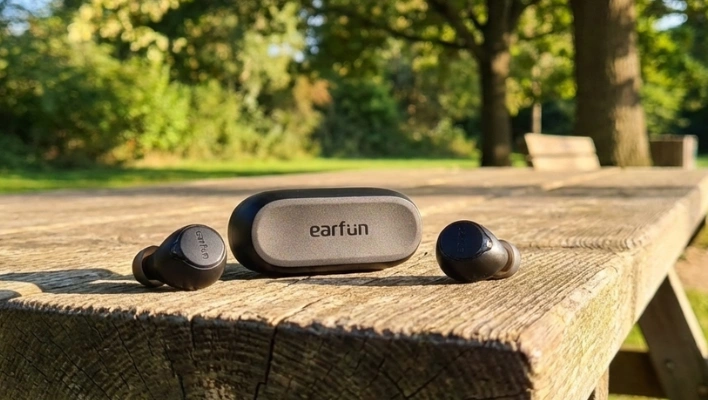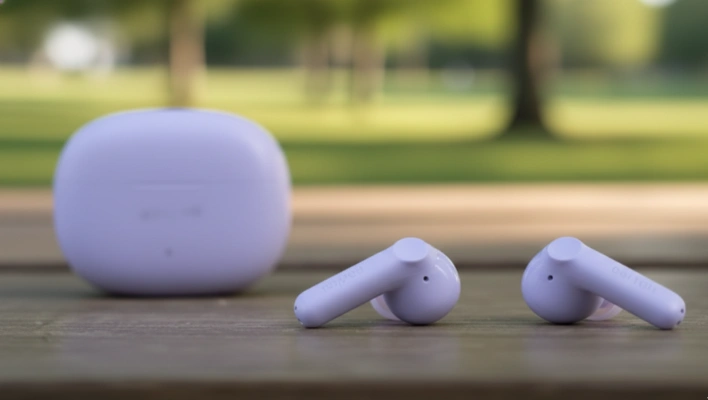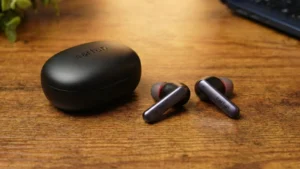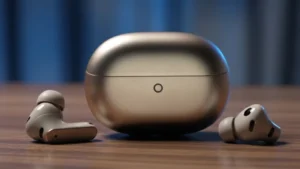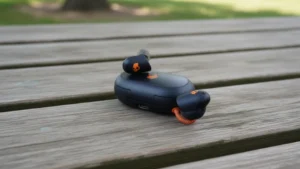Hey there, audio lovers and curious folks!
Have you ever come across headphones that don’t actually sit inside your ears? Sounds a bit strange, right?
Well, let me introduce you to the fascinating world of bone-conduction headphones – a technology that’s changing the way we enjoy our favorite music and podcasts.
In this guide, we’re going to take a closer look at what these unique headphones are all about, the reasons you might find them appealing (or not), and pretty much everything else you need to know.
So, grab a snack, get cozy, and let’s dive into this exciting tech together!
What Are Bone Conduction Headphones?
Bone conduction headphones are a type of audio device that transmits sound through the bones of your skull rather than through the air and into your ears.
This technology bypasses the outer and middle ear, delivering sound vibrations directly to the inner ear.
How Do Bone Conduction Headphones Work? These headphones use transducers to convert audio signals into vibrations.
When placed on the cheekbones or temples, they transmit these vibrations through the skull bones to the cochlea in the inner ear. This process allows the wearer to perceive sound without covering or plugging the ears.

Advantages and Disadvantages of Bone Conduction Headphones
Advantages
- Situational Awareness: By keeping the ears open, users can remain aware of their surroundings, making them ideal for outdoor activities.
- Comfort for Extended Wear: They don’t put pressure on or inside the ears, potentially increasing comfort for long-term use.
- Beneficial for Certain Hearing Impairments: People with conductive hearing loss may find these headphones more effective than traditional options.
- Hygienic Option: Less risk of ear infections as they don’t enter the ear canal.
Disadvantages
- Sound Quality: Generally not as high-fidelity as traditional headphones, especially for bass frequencies.
- Potential for Sound Leakage: Others nearby may hear audio at higher volumes.
- Battery Life: Often shorter than traditional wireless headphones due to the power required for vibrations.
- Fit and Positioning: Proper placement is crucial for optimal sound quality.
Are Bone Conduction Headphones Safe?
Overall, bone conduction headphones are considered safe for most users. They may even be safer than traditional in-ear headphones in terms of potential damage to the eardrum.
However, users should still be mindful of volume levels to protect their hearing.
Popular Brands and Models: While I can’t recommend specific products, some well-known brands in the bone conduction headphone market include Shokz (formerly AfterShokz), Bose, and Sony. When choosing a pair, consider factors like build quality, battery life, and water resistance.
Bone Conduction Earbuds vs. Headphones: Bone conduction technology is primarily used in headphone-style devices, but some companies are developing earbud-style options. The headphone design is generally more common due to the need for contact with the skull.

Pros and Cons of Bone Conduction Headphones
Pros
- Situational awareness
- Comfort for extended wear
- Potential benefits for certain hearing impairments
- Hygienic design
Cons:
- Proper fit is crucial for performance
- Lower sound quality compared to traditional headphones
- Potential sound leakage
- Shorter battery life
Frequently Asked Questions About Bone Conduction Headphones
Q: Can bone conduction headphones cause headaches?
A: While some users report mild discomfort initially, headaches aren’t common. If you experience persistent pain, adjust the fit or consult a doctor.
Q: Are bone conduction headphones good for running?
A: Yes! They’re great for runners as they allow you to hear your surroundings, enhancing safety during outdoor workouts.
Q: Can you wear bone conduction headphones with glasses?
A: Absolutely. Most models are designed to be compatible with glasses, though you might need to adjust them for comfort.
Q: Do bone conduction headphones work for swimming?
A: Some waterproof models are suitable for swimming, but check the IP rating and manufacturer’s guidelines before using them in water.
Q: How long do bone conduction headphones last?
A: Battery life varies by model, typically ranging from 6-10 hours. The devices themselves can last several years with proper care.
Q: Can people with hearing aids use bone conduction headphones?
A: Often, yes. They can be a good option for hearing aid users, but it’s best to consult an audiologist for personalized advice.
Q: Are there bone conduction gaming headphones?
A: Yes, some brands offer models marketed for gaming, promising immersive sound without isolating you from your environment.
Q: How do you clean bone conduction headphones?
A: Gently wipe them with a slightly damp cloth. Avoid submerging non-waterproof models or using harsh chemicals.
Q: Can bone conduction headphones help with tinnitus?
A: While not a cure, some users report that bone conduction headphones can provide relief from tinnitus symptoms. Consult a healthcare professional for medical advice.
Q: Do bone conduction headphones work with long hair?
A: Yes, they work with long hair, though you might need to adjust your hairstyle for optimal contact with your skin.
Wrapping It Up
So there you have it – the lowdown on bone conduction headphones. They’re not your average headphones, that’s for sure. With their unique way of delivering sound and keeping you connected to the world around you, they’re carving out their own special place in the audio world.
Are they for everyone? Probably not. Audiophiles might stick to their high-end cans, and bass lovers might miss that skull-rattling thump. But for runners, cyclists, people with certain hearing issues, or anyone who wants to enjoy their tunes while staying aware of their surroundings, bone conduction headphones could be a real game-changer.
Remember, the best headphones are the ones that fit your lifestyle. So whether you’re team bone conduction or sticking with traditional headphones, the most important thing is that you’re enjoying your music, staying safe, and having fun.
Now, armed with all this info, you’re ready to decide if bone conduction headphones are your next audio adventure. Happy listening, folks!
You might like:
Earbuds vs Neckband: Which is Right for You?
Can earbuds cause vertigo? Strategies to Minimize the Risk
Why won’t my beats turn off? Here’s how to fix this!
Nick, the Co-founder of Earbuds Arena, is a seasoned freelance tech journalist with over ten years of experience covering wearables, apps, headphones, and gadgets. When he’s not immersed in the tech world, you’ll likely find him unwinding with video games, going for a run, or enjoying a game of soccer on the field.


